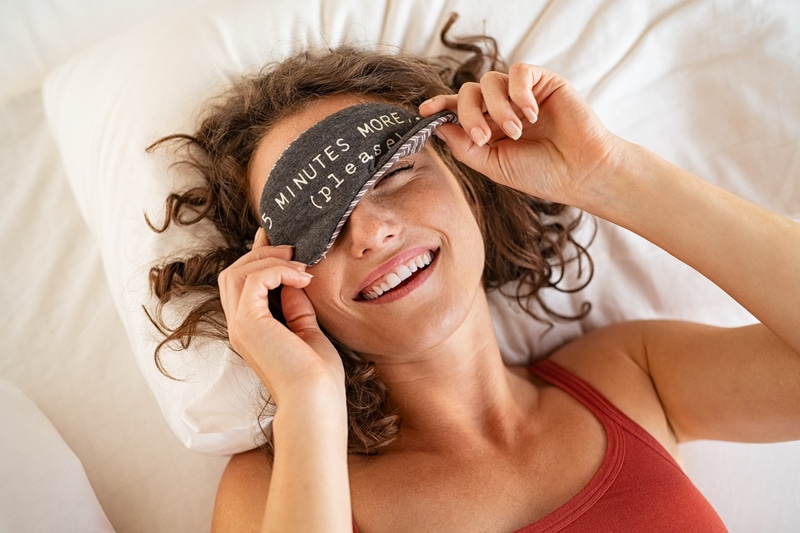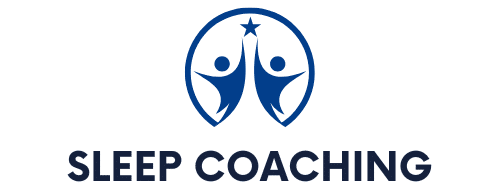Falling asleep in just 10 seconds sounds like a dream, doesn’t it? The idea of shutting your eyes and instantly drifting off feels almost magical. But is it really possible, or just another sleep myth? Here’s the truth: while most people won’t hit the 10-second mark every night, there are proven techniques that can help you knock out faster than you thought possible. Whether it’s building up the right “sleep pressure” or trying quick, science-backed methods, falling asleep fast might not be a fantasy after all. Let’s get into it.

Table of Contents
The Secret to Falling Asleep Fast: Sleep Pressure
When it comes to falling asleep in just 10 seconds, the real magic starts with sleep pressure. Think of it as the invisible timer your body sets throughout the day to build up the need for rest. Without enough sleep pressure, no amount of breathing exercises or relaxation tricks will do the job. Let’s break it down.
What Is Sleep Pressure and Why Does It Matter?
Sleep pressure is your body’s natural system for balancing sleep and wakefulness. During the day, as you stay awake and active, your body builds a chemical called adenosine. This chemical is like your brain’s sleep debt tracker. The longer you stay awake, the more adenosine piles up, creating the pressure you need to feel tired.
But here’s the catch. If you take naps that are too long or drink too much caffeine, it’s like giving adenosine the day off. That pressure weakens, and falling asleep—especially fast—gets a whole lot harder. When sleep pressure is strong, it’s almost like your brain flips an “off switch” the second your head hits the pillow.
How to Build Sleep Pressure for Faster Sleep
Building strong sleep pressure is all about how you spend your day. If you’re not active or you’re messing with your body’s natural systems, your sleep pressure won’t stand a chance. Here’s how to fix that:
- Get moving: Physical activity is one of the easiest ways to build sleep pressure. You don’t need to run a marathon—just try a brisk walk, a workout, or even some stretching. Exercise helps burn off energy and doubles as a stress reliever.
- Skip late-day naps: Naps can be a lifesaver, but keep them short (around 20-30 minutes) and early in the day. Long naps, especially in the late afternoon, can weaken your sleep pressure by giving your brain the recharge it’s trying to save for bedtime.
- Control light exposure: Your body clock, or circadian rhythm, takes cues from light. Get plenty of sunlight during the day to tell your brain it’s time to stay awake. But as night creeps in, reduce blue light from screens to avoid sending your brain mixed signals. Think of light as your body’s on/off button—use it wisely.
- Limit caffeine after noon: Coffee and energy drinks block adenosine, tricking your brain into thinking it’s not tired. If afternoon fatigue hits, try drinking water or taking a quick walk instead.
When you build strong sleep pressure throughout the day, you’re setting yourself up to fall asleep fast—sometimes in seconds. Your body will be ready to shut down the moment you let it. All that’s left is to pair your sleep pressure with the right techniques to seal the deal.
Proven Techniques to Fall Asleep Fast
Sometimes, it feels like your brain just won’t hit the “off” switch when it’s time to sleep. The good news? There are techniques designed to quiet the noise and help you fall asleep in moments. While not everyone will fall asleep in 10 seconds flat every night, these methods have helped countless people drift off quicker. Let’s explore three popular ones.
The Military Method: Fall Asleep Like a Soldier
The Military Method is a sleep technique that’s been used by the armed forces to fall asleep anywhere—literally. It’s said to work in as little as two minutes, but with practice, the time can shrink to even less. Soldiers perfected it to get quick rest during unpredictable schedules, and the steps are surprisingly simple.
Here’s how it works:
- Relax your face: Let every muscle in your face go limp, including your forehead, cheeks, and tongue.
- Drop your shoulders: Let them sink down, releasing any tension. Do the same with your arms.
- Exhale tension: Take a deep breath, exhale slowly, and relax your chest.
- Loosen your legs: Release the tightness in your thighs and calves, focusing on one leg at a time.
- Clear your mind: Visualize a calming scene, like floating on a raft in a quiet lake. If thoughts creep in, repeat the phrase “don’t think, don’t think” for 10 seconds.
This technique trains your body and mind to power down quickly, even in stressful environments. It might not come naturally at first, but keep practicing. Over time, it becomes second nature.
4-7-8 Breathing: The Relaxation Hack for Quick Sleep
Ever notice how your breathing changes when you’re stressed? Quick, shallow breaths keep your body on high alert. The 4-7-8 breathing technique flips that, telling your mind it’s safe to relax. This method was developed by Dr. Andrew Weil and is known for its calming effects.
Here’s how to do it:
- Inhale for four seconds: Breathe deeply through your nose, filling your lungs completely.
- Hold for seven seconds: Let the air stay in your lungs while staying still and calm.
- Exhale for eight seconds: Slowly release the air through your mouth, making a soft “whoosh” sound.
Repeat this process four times. The extended exhale helps reset your nervous system, lowering your heart rate and relaxing your muscles. It’s like hitting the “reset” button on your body, setting the stage for sleep. If you feel anxious or overwhelmed at bedtime, this method can be a lifesaver.
Here’s a video from Dr. Andrew Weil that shows you how to practice the 4-7-8 breathing technique:
Progressive Muscle Relaxation: Release Tension for Better Sleep
If you’ve ever felt like every muscle in your body is buzzing after a long day, progressive muscle relaxation (PMR) might be your ticket to better sleep. By tensing and releasing muscles one by one, you can physically shake off the day’s stress.
Here’s how to practice PMR:
- Start at your feet: Tense the muscles in your toes for five seconds, then release.
- Move up your body: Work through each muscle group—calves, thighs, stomach, chest, arms, and so on.
- Focus on the release: Pay attention to how each muscle feels as it relaxes.
Think of it as scanning your body to release hidden tension. With each muscle you relax, your body gets closer to that “ready-to-snooze” state. It’s simple, effective, and incredibly calming. Plus, if you pair it with deep breathing, you could add an extra layer of relaxation.
Using PMR doesn’t have to take forever. Start small, focusing on just a few muscle groups, and expand as you get the hang of it.
These techniques, when combined with strong sleep pressure, can help you fall asleep faster—sometimes even in 10 seconds. What’s stopping you from trying them tonight?
Can You Really Fall Asleep in 10 Seconds?
The idea of falling asleep in 10 seconds sounds almost too good to be true. For most people, it takes anywhere from a few minutes to over an hour to fully unwind and doze off. So, let’s be real: is this 10-second sleep magic something that genuinely happens, or is it just a flashy claim? To figure this out, we need to look at what makes falling asleep fast possible in the first place and whether this timeframe is realistic for the average person.
What Happens to Your Body When You Fall Asleep?
Falling asleep isn’t just an “off switch” moment. Your brain and body have to go through a process. First, your mind winds down from the day. Then, your body starts to release sleep hormones like melatonin, dropping your heart rate and relaxing your muscles. This transition can take time, especially if you’re stressed, caffeinated, or glued to a screen before bed.
So, how does someone even come close to conking out in 10 seconds? The trick lies in preparation. If your body is already primed for sleep—through strong sleep pressure and calming techniques—it might be possible to fall asleep that fast under the right conditions. It’s not effortless, though, and it certainly won’t work for everyone every night.
Falling Asleep in 10 Seconds: Rare, But Possible
Here’s the truth: falling asleep in 10 seconds is rare, but not entirely out of reach. Some people, such as military personnel or seasoned relaxation experts, have trained themselves to unwind so quickly that 10 seconds feels doable. It mostly depends on your body’s readiness. If you’re exhausted and your sleep pressure is sky-high, you’re more likely to crash as soon as you relax.
But for the average person with no practice? It’s more realistic to aim for improving overall sleep habits and learning techniques that get you snoozing in a couple of minutes rather than seconds. Ten seconds might not work every time—but with preparation, you might just surprise yourself.
Final Thoughts: Can You Master the 10-Second Sleep Trick?
Falling asleep in 10 seconds isn’t a guarantee, but it’s not entirely out of reach either. The key lies in building strong sleep pressure during the day and pairing it with effective techniques like the Military Method, 4-7-8 Breathing, or Progressive Muscle Relaxation.
These methods may not make you conk out instantly, but they can help you drift off much faster than usual. Small changes in your routine—like cutting back on caffeine or staying active—set the stage for these techniques to work even better.
Sleep is a skill you can sharpen. Why not give these strategies a try tonight? After all, better sleep starts with small, simple steps.
FAQs: How to Fall Asleep in Seconds
Is it really possible to fall asleep in 10 seconds?
Falling asleep in exactly 10 seconds isn’t typical for most people, but it’s possible under the right conditions. If your sleep pressure is high and you use effective relaxation techniques like the Military Method or Progressive Muscle Relaxation, you can drastically reduce the time it takes to fall asleep. While 10 seconds might not be realistic every night, improving sleep habits can help you doze off much faster.
What is the best technique to fall asleep quickly?
The Military Method is one of the most effective techniques for falling asleep fast. It involves relaxing each muscle group, breathing deeply, and clearing the mind with visualization. Other proven methods include the 4-7-8 Breathing Technique and Progressive Muscle Relaxation, both of which help calm the nervous system and prepare the body for sleep.
Why do some people fall asleep instantly while others struggle?
Several factors affect how quickly someone falls asleep, including sleep pressure, stress levels, and bedtime habits. People who fall asleep instantly often have high sleep pressure from physical activity, strong circadian rhythms, and consistent bedtime routines. On the other hand, factors like stress, caffeine, screen exposure, or poor sleep hygiene can make falling asleep take much longer.
How can I train my body to fall asleep faster?
You can train your body to fall asleep faster by:
• Building strong sleep pressure (exercise, avoiding naps, limiting caffeine)
• Following a consistent bedtime routine
• Using relaxation techniques like deep breathing and muscle relaxation
• Reducing blue light exposure before bed
With practice, these habits make it easier to fall asleep quickly—sometimes even in seconds!
What should I do if I still can’t fall asleep fast?
If you struggle to fall asleep quickly, try adjusting your routine. Avoid stimulants (like caffeine) in the afternoon, create a relaxing pre-bedtime ritual, and ensure your bedroom is dark, cool, and comfortable. If stress or anxiety keeps you up, meditation or breathing exercises can help. If sleep issues persist, consulting a sleep coach or specialist might be a good idea.
Stone Evans, Founder of SleepCoaching.com
Stone Evans is the founder of SleepCoaching.com which has become one of the most popular destinations online for people seeking better sleep. Stone started developing this website after realizing his own sleep struggles and then beginning an intensive period of study (which included professional sleep coach training) and ongoing lifestyle changes to improve and optimize his sleep.
Now through in-depth articles from sleep experts around the world, the internet's leading and most comprehensive sleep coaching directory, quantitative sleep product reviews and Stone's personal daily sleep tracking journey, visitors to our website regularly report gaining information and insights that are helping them achieve better health, better sleep and a better quality of life.


Clearing your mind is the hardest part when your mind is moving 100 mph. I don’t typically have a problem sleeping but there are nights where I just can’t turn it off. You wanna know my secret? I read a book and I don’t get past the 2nd page and am asleep. I swear!
Stone, this article is a great resource for anyone who’s ever struggled with falling asleep. The Military Method and 4-7-8 Breathing Technique are both practical and easy to incorporate into a bedtime routine. I especially appreciate how you’ve broken down each technique into simple steps, making them approachable even for those who might be new to these methods. It’s also reassuring to know that while falling asleep in 10 seconds might not be guaranteed, these techniques can still significantly improve sleep quality.
Thank you for sharing these insightful techniques for falling asleep quickly. The Military Method and the 4-7-8 Breathing Technique are both intriguing and practical approaches to improving sleep onset. I appreciate the detailed breakdown of each method, which makes it easier to try them out effectively.
One aspect that could enhance the article is a discussion on potential challenges or limitations people might face when attempting these techniques. For example, some individuals might find it difficult to clear their minds or may need additional strategies if they have underlying sleep disorders.
Additionally, incorporating a brief section on other sleep hygiene practices that complement these methods could provide a more holistic approach to improving sleep quality. Overall, this article offers valuable information for those looking to fall asleep faster and is a great starting point for anyone struggling with sleep issues.
This is such a helpful read! I’ve definitely experienced those sleepless nights where falling asleep feels impossible, so I’m really intrigued by the Military Method. I love how it focuses on progressively relaxing each part of the body—it seems like a practical way to unwind. Clearing the mind is always the hardest part for me, but I can see how practicing this method could make a difference over time.
The 4-7-8 breathing technique is another one I’ve heard about, but I’ve never tried it consistently. I like how it shifts your focus away from anxious thoughts and onto your breath. The idea of slowing your heart rate and calming the nervous system makes sense, especially when stress is keeping you awake.
While falling asleep in 10 seconds sounds like a dream (pun intended), it’s reassuring to know these techniques are more about getting to sleep quicker overall, rather than being a magic bullet. I’m definitely going to give these a try!
The 4-7-8 method you mentioned has been a game changer for me! It’s helped me relax and fall asleep faster, even when I’ve been stressed or anxious. While I haven’t hit the 10-second mark, it’s significantly reduced my time to fall asleep.
Thanks for sharing these practical techniques. They’re a lifesaver for anyone struggling with sleep!